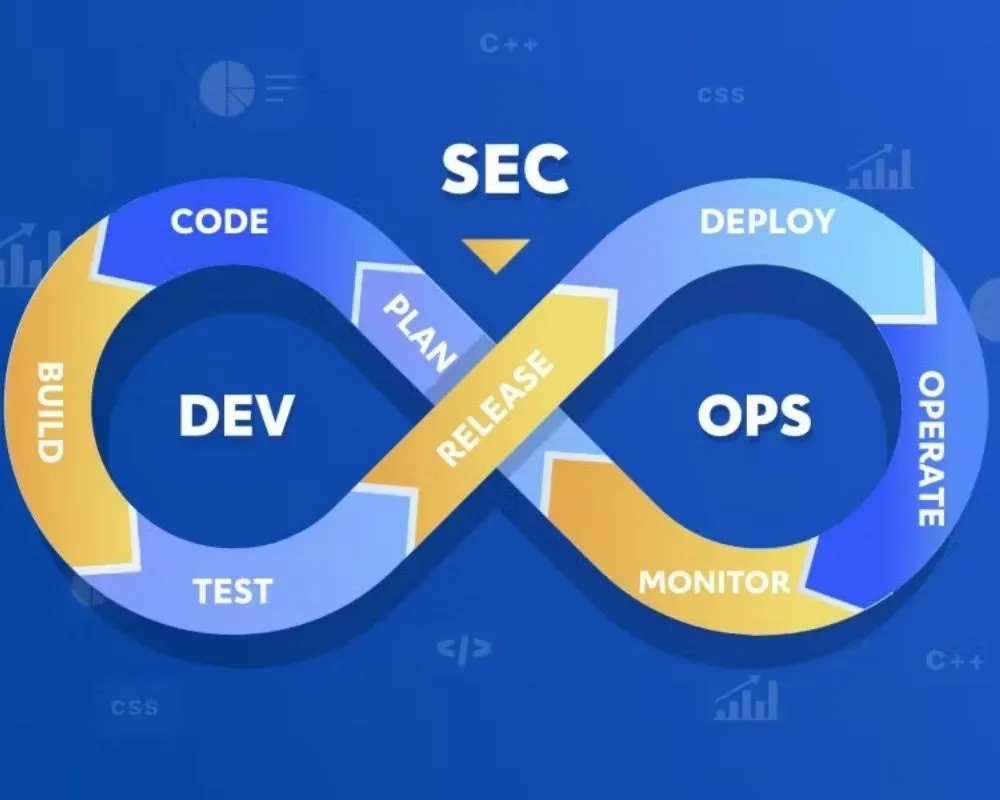
DevSecOps – Hướng đi mới cho bảo mật doanh nghiệp. Nguồn: prismic
1. What is DevSecOps?
1.1. Definition of DevSecOps (Development – Security – Operations)
DevSecOps stands for the three key pillars of modern software development and operations: Development, Security, and Operations.
It is a philosophy that integrates security as an inseparable part of the Software Development Life Cycle (SDLC), rather than treating it as the final check after the product has been completed.
In other words, DevSecOps is the next evolution of DevOps—where security is no longer considered a “burden” of the IT or cybersecurity departments alone, but is embedded throughout the entire process, from writing code to deploying the product to the market.
1.2. DevOps vs DevSecOps: Key Differences
| Criteria | DevOps | DevSecOps |
|---|---|---|
| Focus | Automation and collaboration between Dev and Ops | Integrating security across the entire development process |
| Security Handling | Addressed at the end (after deployment) | Addressed from the beginning (Shift-left Security) |
| Stakeholders | Dev & Ops | Dev + Security + Ops (cross-functional) |
| Tools | CI/CD, Monitoring, Infrastructure as Code | Adds SAST, DAST, SCA, Container Scanning, IaC Security, etc. |
The key difference lies in “shifting security to the left” in the workflow—meaning the earlier security is integrated, the lower the risks and remediation costs will be later.
1.3. Why Was DevSecOps Created?
For years, the DevOps model has helped organizations accelerate software development and shorten time-to-market. However, this speed has also introduced significant security vulnerabilities, as teams often focused on performance and functionality while neglecting security checks.
Several factors have made DevSecOps an inevitable necessity:
Increasingly sophisticated cyberattacks: According to IBM, the average cost of a data breach in 2023 exceeded USD 4.45 million.
Stricter legal compliance: Standards such as ISO/IEC 27001, GDPR, and HIPAA require security to be implemented from the design stage.
Rising demand for CI/CD and cloud-native systems: Constantly evolving systems require automated and adaptive security mechanisms.
In the digital era, security is no longer optional—it is vital for survival. By adopting DevSecOps, businesses can not only develop software faster but also make it safer and more sustainable.
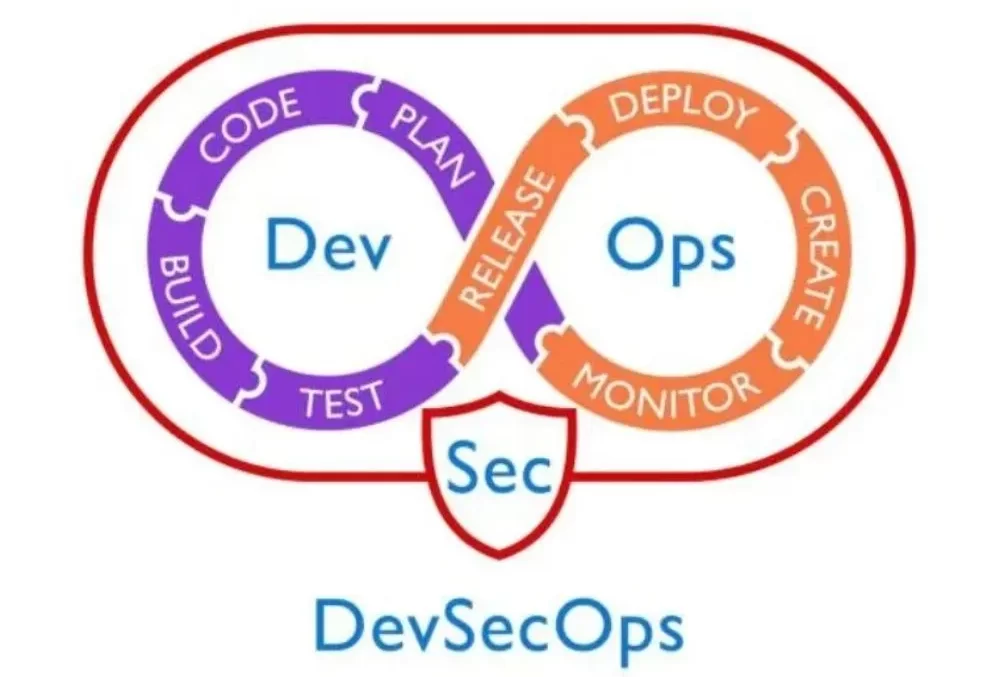
Thông tin chung về DevSecOps. Nguồn: datascientest
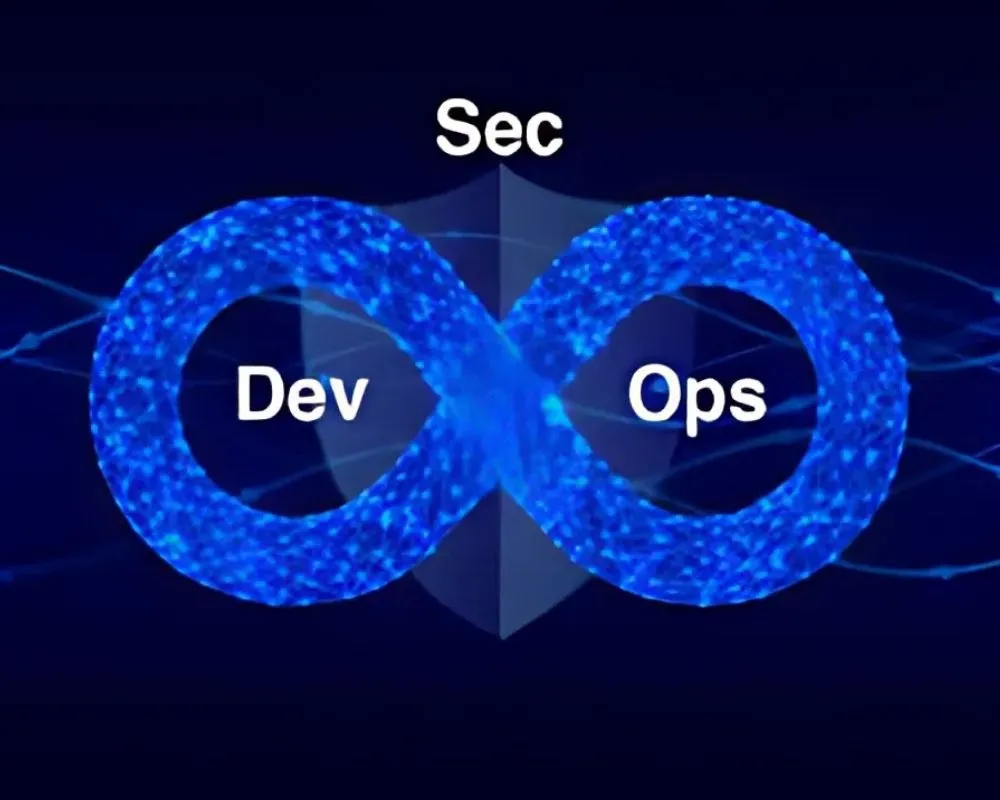
Nguyên lý hoạt động của sự kết hợp công nghệ DevSecOps. Nguồn: encrypted

Lợi ích của DevSecOps tới doanh nghiệp. Nguồn: opentext
4. DevSecOps in the Enterprise Digital Transformation Journey
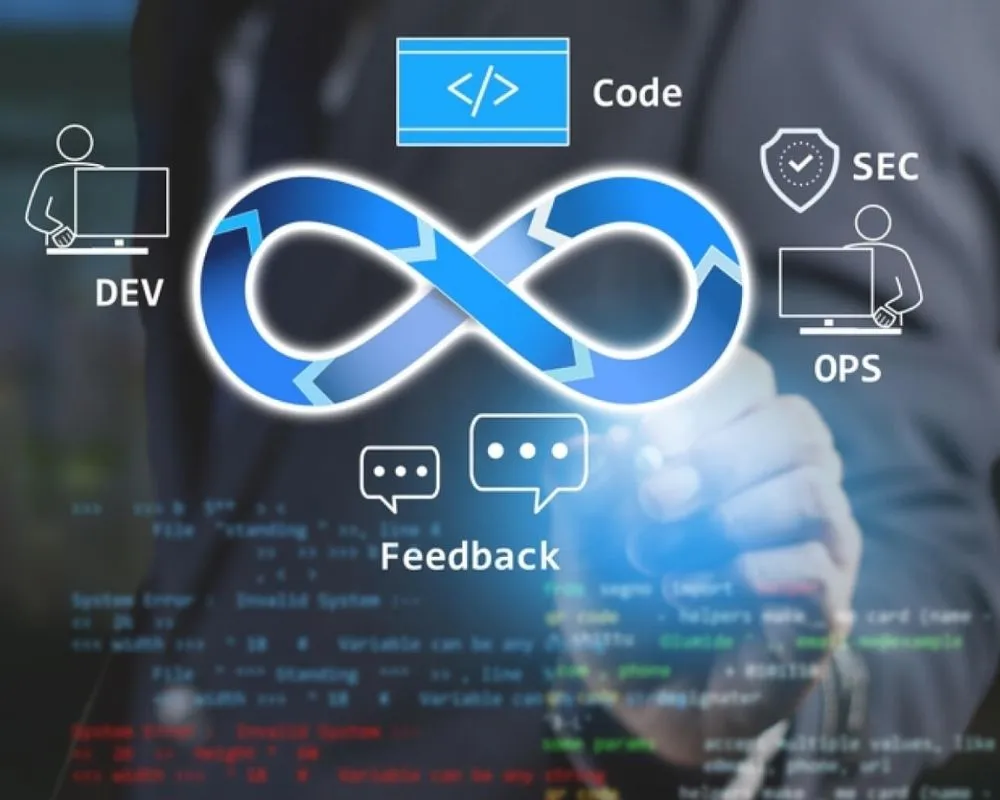
DevSecOps trong hành trình chuyển đổi số của doanh nghiệp. Nguồn: bluewhaleapps
5. Successful DevSecOps Implementation Case Study at BAP Software
5.1. Project Background – High Security Requirements
The client, a major financial enterprise in Japan, was undergoing digital transformation by migrating its financial record and contract management system from a legacy platform to a Cloud-Native environment.
Key requirements:
High security standards: All financial data and customer information had to comply with ISO 27001 and Japan’s APPI (Act on the Protection of Personal Information).
Rapid development pace: Continuous system updates every two-week sprint.
Zero service disruption: The software had to remain consistently available for thousands of internal users and external clients simultaneously.
5.2. DevSecOps Solution Implemented
From the start, the BAP Software team advised and implemented a comprehensive DevSecOps model, fully integrated with the client’s existing Agile + CI/CD framework.
Key solution highlights:
Shift-left Security: Security was embedded from the requirement analysis and system design phases.
Secure CI/CD pipeline: Each code commit automatically triggered static and dynamic security tests (SAST & DAST).
IaC Security Validation: Terraform and Kubernetes configuration files were scanned to ensure secure cloud infrastructure setup.
Automated Security Alerts: Integrated GitLab with Slack for real-time vulnerability notifications to developers.
5.3. Technologies & Tools Used
| Objective | Tools Implemented |
|---|---|
| Source Code & CI/CD Management | GitLab CI/CD |
| Static Application Security Testing (SAST) | Snyk + SonarQube |
| Container Image Scanning | Trivy |
| Infrastructure as Code (IaC) & Policy Management | Terraform + Open Policy Agent (OPA) |
| System Monitoring & Alerts | Prometheus + Grafana + ELK Stack |
| Container Orchestration | Kubernetes (AKS) |
| Cloud Hosting | Microsoft Azure |
5.4. Achieved Results
After 4 months of DevSecOps implementation:
35% faster development speed: Feature delivery time to production reduced from 10 days → 6.5 days per sprint.
60% earlier vulnerability detection and resolution: 80% of security issues were fixed directly in the development stage thanks to automation, minimizing production risks.
100% compliance with security standards: Internal audits confirmed no critical vulnerabilities remained unresolved.
99.95% system uptime: Continuous operation with zero downtime caused by security or operational failures over six months.
Conclusion:
By implementing DevSecOps from the very beginning, the project not only met strict security and performance requirements but also enhanced long-term software quality.
This case demonstrates that DevSecOps doesn’t slow development — it enables enterprises to “move faster and more securely.”
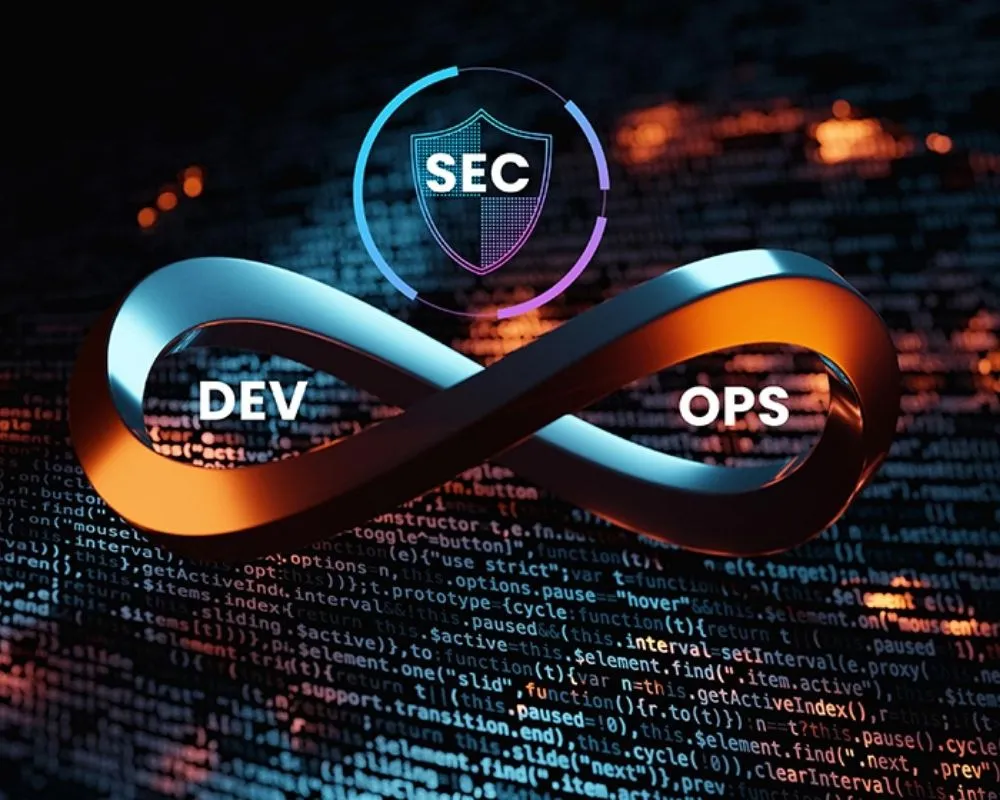
Các case study áp dụng công nghệ DevSecOps tại BAP Software. Nguồn: q3tech
6. Why Choose BAP Software as Your DevSecOps Partner?
Implementing DevSecOps requires more than just strong tools — it demands a partner with deep expertise in business processes, system architecture, and, most importantly, an integrated security mindset.
With over a decade of experience in technology, BAP Software has become a trusted partner for major enterprises in Japan, Singapore, Vietnam, and Europe, helping them build sustainable and secure DevSecOps ecosystems.
Comprehensive Technological Expertise
- Cloud-Native DevSecOps Integration: Extensive experience with Kubernetes, Docker, serverless architectures, and IaC infrastructures on AWS, Azure, and GCP.
- Advanced CI/CD Pipeline Development: Proficient in GitLab CI/CD, Jenkins, ArgoCD, integrated with automated security testing tools such as Snyk, Trivy, and SonarQube.
- Skilled Security & DevOps Engineers: Certified professionals with hands-on expertise in ISO 27001 and AWS Certified Security programs.
Global Implementation Experience
- Japanese & Singaporean Clients: Projects meet strict security and operational standards under APPI and PDPA regulations.
- European Clients: Compliance with GDPR and regular audit requirements ensures transparency and accountability.
- Industry Adaptability: Proven success across multiple sectors — finance, manufacturing, healthcare, education, and retail.
Philosophy: “Security Is a Strategy, Not a Cost”
Unlike traditional reactive approaches that fix vulnerabilities post-incident, BAP views security as an integral component of digital transformation:
- Embedding security throughout the development lifecycle using the Shift-left Security approach.
- Building a DevSecOps culture: Training teams and standardizing internal processes.
- Tailored strategic consulting: Designing security solutions aligned with each enterprise’s scale and internal capabilities — not just “copy & paste” frameworks from theory.
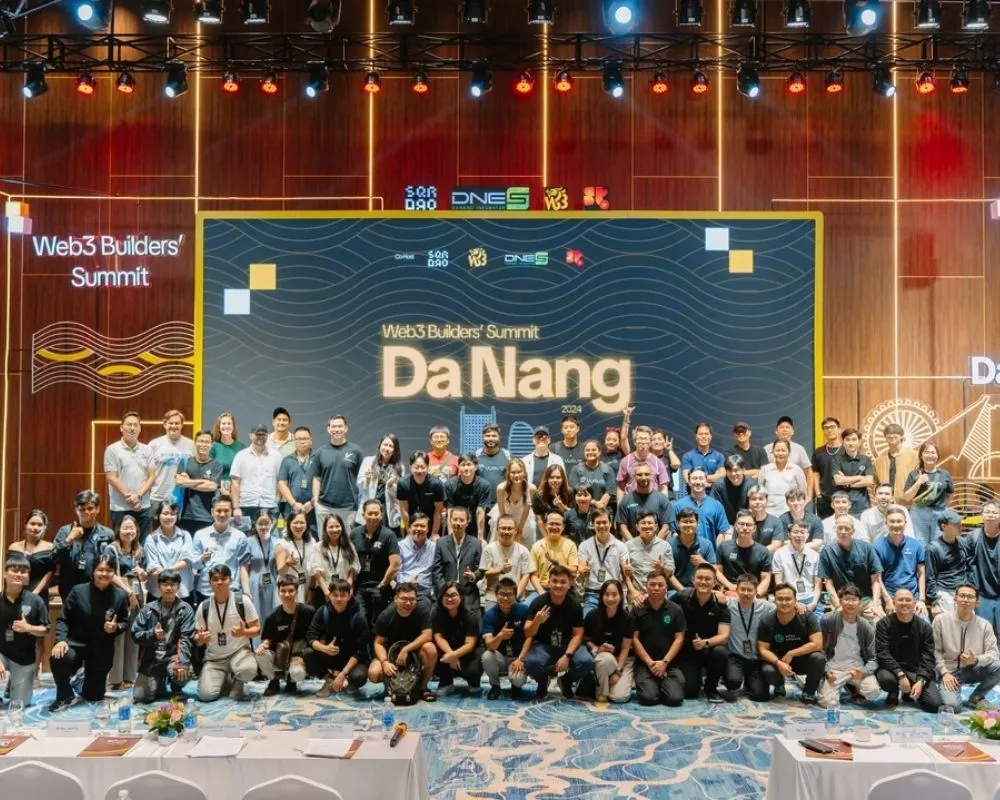
Các lý do nên chọn BAP làm đối tác triển khai DevSecOps trong doanh nghiệp. Nguồn: BAP Software
7. Conclusion
DevSecOps is more than a software development technique — it is a comprehensive system protection strategy for the digital era.
As cyberattacks grow increasingly sophisticated and data becomes one of the most valuable corporate assets, integrating security from the earliest stages of development is no longer optional — it’s essential.
DevSecOps empowers businesses to:
Accelerate time-to-market with secure, automated pipelines.
Prevent security risks from within the system architecture.
Strengthen trust among customers, partners, and investors.
Comply with international security standards and expand globally.
BAP Software has successfully implemented DevSecOps for organizations across finance, technology, manufacturing, and healthcare, delivering both technical excellence and strategic value.
With hands-on experience and a team of international experts, BAP provides customized DevSecOps solutions tailored to each business model — from startups to large-scale enterprises.
Contact BAP Software today for a consultation on how to build a standardized, flexible, and deeply secure DevSecOps system for your organization.












